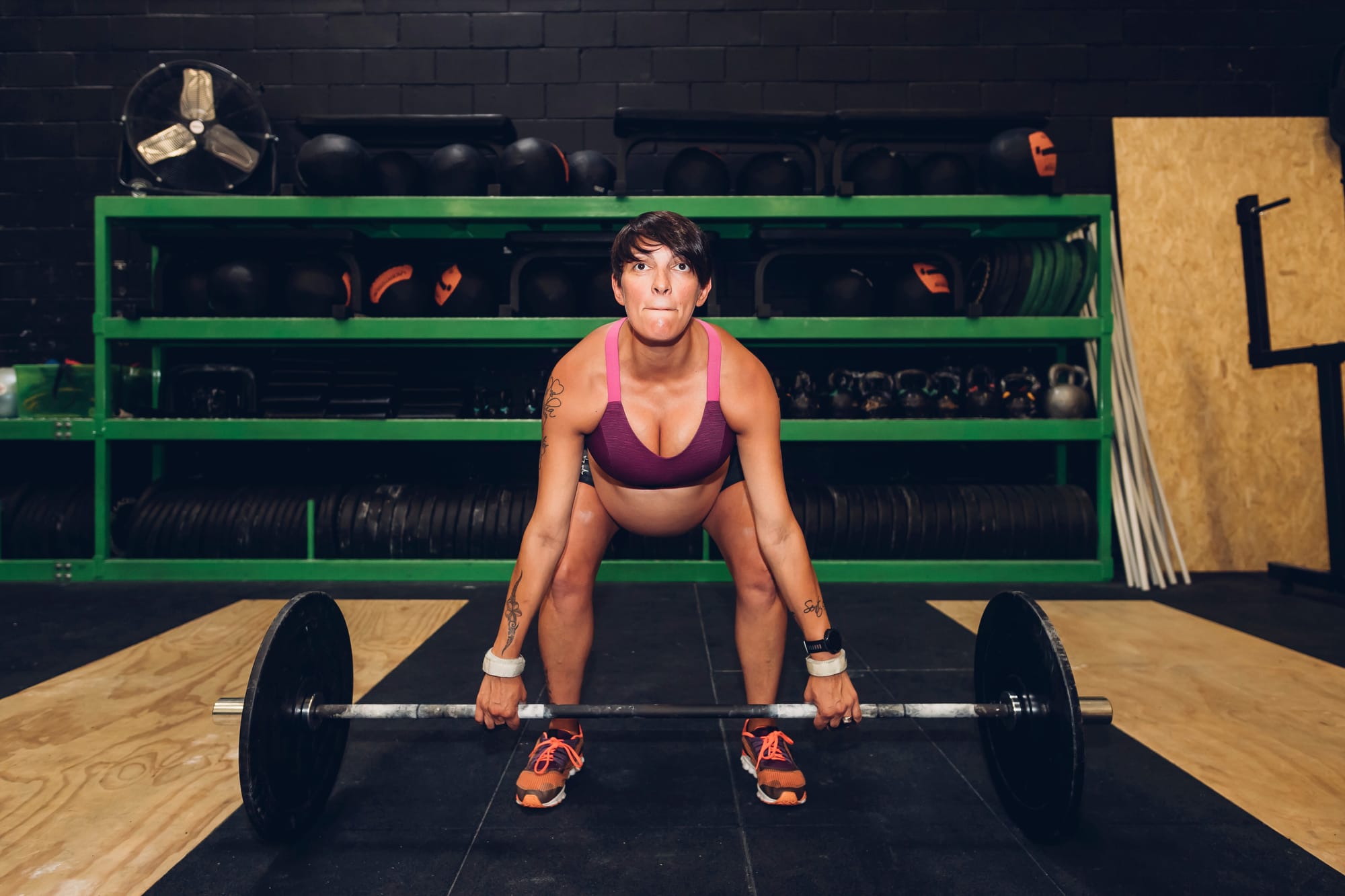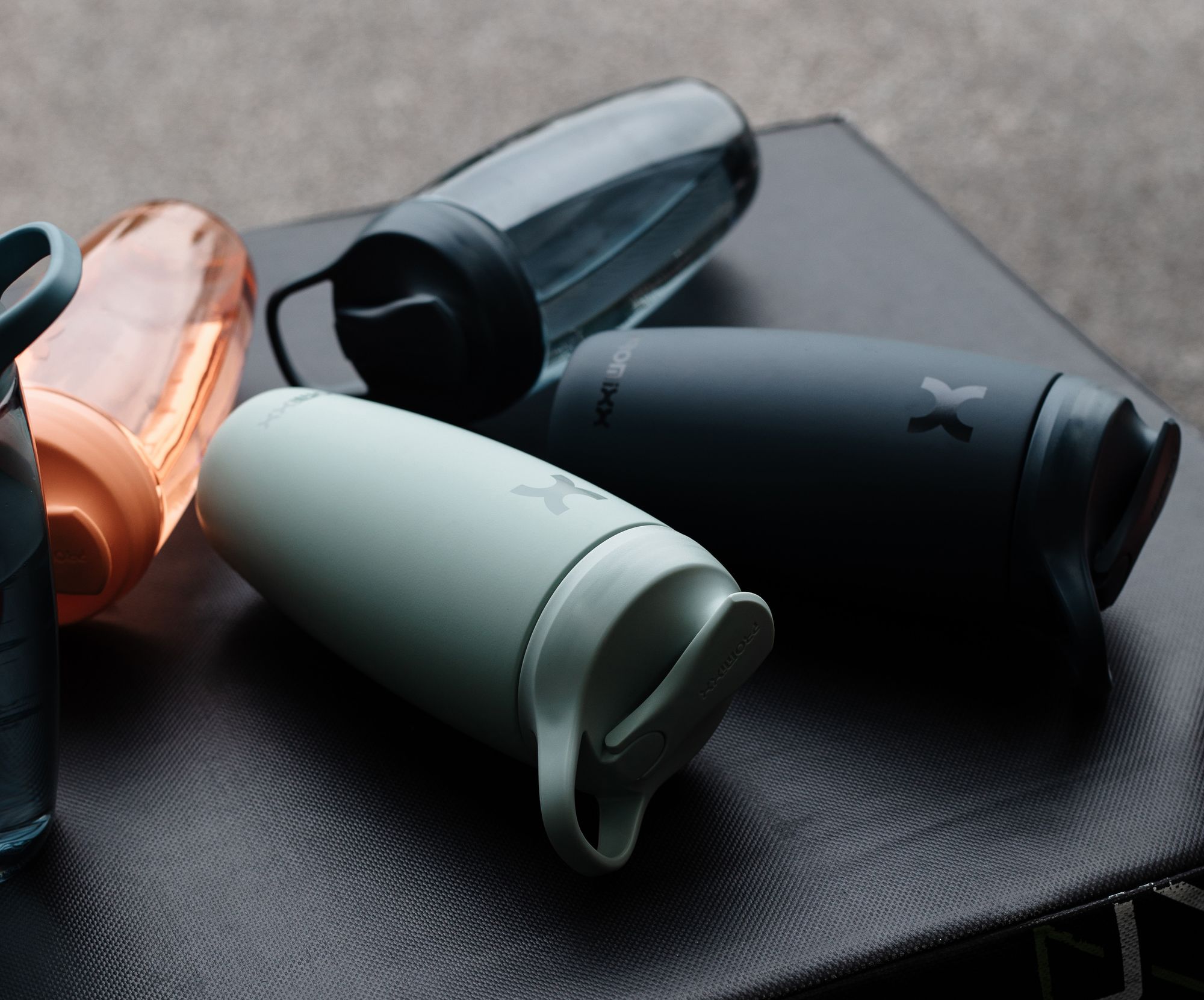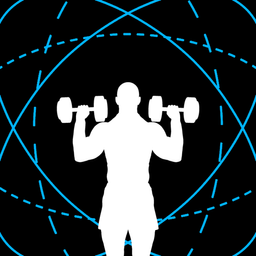Why, When, And How to Return To Exercise After Pregnancy
Baby's out! (Congratulations!) And now, you're wondering about exercise after pregnancy. Well, here's your guide — we cover why, when, and how.

Baby’s out! 👶
And now, you’re wondering about exercise after pregnancy. Here’s your guide.
Why exercise after pregnancy?
So … while you may or may not have the goal of “bouncing back” to your pre-baby body*, the truth is that exercise after pregnancy can do much more for you (and baby) than just promoting weight loss.
Other benefits include:
A little note on “snapping back”
*Just to be clear, “snapping back” to your pre-pregnancy body within weeks of giving birth is an unattainable reality for many. Your body grew and stretched to accommodate a whole-ass, stinking cute baby throughout your gestation period.
The post-pregnancy period is also an extremely demanding new life stage.
You’re completely responsible for a small, vulnerable human — one who needs to be fed every 1.5 to 3 hours.
(That’s the start of the feeding window, by the way. Yes, this means you’ll be feeding them … around the clock.)
So, unless you have the luxury of a lot of help (and we do mean a lot), trying to achieve rapid post-partum weight loss (requiring the perfect blend of exercise, nutrition, and lifestyle factors, such as enough sleep, LOL) just isn’t realistic.
Nor is it healthy, TBH, but we’ve already spent so much time talking about this … so here, let’s wrap this section up with 3 quick points:
- Exercise after pregnancy isn’t just helpful for weight loss
- Expecting to physiologically return to your pre-pregnancy body within weeks of giving birth is unrealistic
- IF you are actively trying to lose weight after pregnancy, stick to the general guidelines of limiting your weight loss to 0.5 to 1 kg weekly (check in with your OB-GYN for their tailored recommendations)
When can you exercise after pregnancy?
According to a 2023 review of guidelines for resuming exercise after pregnancy, published in the British Journal of Sports Medicine, most studies recommended beginning physical activity 6 weeks postpartum.
That said, this is not a hard-and-fast rule.
How soon you can safely return to exercise after pregnancy also depends on your delivery method, birth experience, and emotional state.
For example, here’s what the American College of Obstetricians and Gynecologists (ACOG) recommends:
🚨 Note: your OB-GYN’s recommendations should override all recommendations you get from the Internet, alongside well-meaning friends and family members.
How much exercise?
The 2023 review mentioned earlier recommended “150 minutes of moderate-vigorous physical activity per week”.
But it did not provide additional specifics.
In general, though, most health organizations and experts still recommend easing back into your pre-pregnancy exercise routine. In other words, don’t expect to barbell squat your usual weight immediately back in the gym the moment your OB-GYN clears you.
Instead, here are a few guidelines (as always, it’s ideal if you can defer to a postpartum fitness specialist):
Start with core and pelvic floor exercises
Core exercises include pelvic tilts and glute bridges.
Connecting with a pelvic floor physical therapist can help you find the best pelvic floor recovery plan for you, but here are a few examples of exercises pelvic floor PTs often recommend to newly minted moms:
- Clamshell
- Diaphragmatic breathing
- Isometric lower abdominal contraction
- Kegel and reverse Kegel
Progress to low-impact, then medium-impact exercises
You could start with walking.
Other activities to consider include cycling on a static bike and power walking. You’ll know you’re ready to progress if you haven’t experienced any issues with your pelvic floor (e.g., incontinence and vaginal heaviness) or had setbacks such as infections and pain.
At this point, you can also consider returning to your resistance training plan — but with much lighter loads.
Transition into higher-impact exercise (IF you want)
Research shows that heavy lifting and CrossFit do not harm pelvic floor health in women AS LONG AS you progress carefully.
Once you can tolerate medium-impact exercises without symptoms for a few weeks, you could transition into higher-impact exercises.
On average, professional powerlifters return to Olympic lifting at 16 weeks postpartum, so take that as a guideline. (Note: they’re professionals, so you might need more time — listen to your body.)
FAQs about exercise after pregnancy
Will exercise affect my breast milk supply?
There is no evidence that normal levels of exercise would affect your milk supply. That said, it’s still crucial for you to:
If you need help getting all that protein in:



How do I know if I’m “overdoing” exercise after pregnancy?
If lochia (vaginal discharge that can last anywhere between 6 to 8 weeks following childbirth; contains blood and leftover uterine tissue from pregnancy) gets heavier or changes color after exercise, you could be overdoing it.
Listen to your body. And, as always, don’t be afraid to check in with your OB-GYN for their professional opinion.
What if I don’t have a personal trainer but want a done-for-me, personalized training plan?
Ah, we got you.
GymStreak is THE smart, AI-powered workout planner app you need. Just input your fitness goals, experience, and training availability, and it’ll come up with a tailored workout plan for you in seconds. It also helps you track your nutrition, so you know if you’re fueling yourself (and, in turn, baby) right.
Check it out here:
References
Exercise After Pregnancy. https://www.acog.org/womens-health/faqs/exercise-after-pregnancy. Accessed 9 Aug. 2024.
Forner, Lori B., et al. “Do Women Runners Report More Pelvic Floor Symptoms than Women in CrossFit®? A Cross-Sectional Survey.” International Urogynecology Journal, vol. 32, no. 2, Feb. 2021, pp. 295–302. PubMed, https://doi.org/10.1007/s00192-020-04531-x.
---. “Symptoms of Pelvic Organ Prolapse in Women Who Lift Heavy Weights for Exercise: A Cross-Sectional Survey.” International Urogynecology Journal, vol. 31, no. 8, Aug. 2020, pp. 1551–58. Springer Link, https://doi.org/10.1007/s00192-019-04163-w.
Gunderson, Erica P. “Impact of Breastfeeding on Maternal Metabolism: Implications for Women with Gestational Diabetes.” Current Diabetes Reports, vol. 14, no. 2, Feb. 2014, p. 460. PubMed Central, https://doi.org/10.1007/s11892-013-0460-2.
Kołomańska-Bogucka, Daria, and Agnieszka Irena Mazur-Bialy. “Physical Activity and the Occurrence of Postnatal Depression—A Systematic Review.” Medicina, vol. 55, no. 9, Sept. 2019, p. 560. PubMed Central, https://doi.org/10.3390/medicina55090560.
Moore, Isabel S., et al. “Multidisciplinary, Biopsychosocial Factors Contributing to Return to Running and Running Related Stress Urinary Incontinence in Postpartum Women.” British Journal of Sports Medicine, vol. 55, no. 22, Nov. 2021, pp. 1286–92. bjsm.bmj.com, https://doi.org/10.1136/bjsports-2021-104168.
Mughal, Saba, et al. “Postpartum Depression.” StatPearls, StatPearls Publishing, 2024. PubMed, http://www.ncbi.nlm.nih.gov/books/NBK519070/.
N. Fotso, Monique, et al. “Association of Physical Activity with the Prevention and Treatment of Depression During the Postpartum Period: A Narrative Review.” Cureus, vol. 15, no. 8, p. e44453. PubMed Central, https://doi.org/10.7759/cureus.44453.
Prevett, Christina, et al. “Impact of Heavy Resistance Training on Pregnancy and Postpartum Health Outcomes.” International Urogynecology Journal, vol. 34, no. 2, Feb. 2023, pp. 405–11. PubMed, https://doi.org/10.1007/s00192-022-05393-1.
Price, Natalia, et al. “Pelvic Floor Exercise for Urinary Incontinence: A Systematic Literature Review.” Maturitas, vol. 67, no. 4, Dec. 2010, pp. 309–15. PubMed, https://doi.org/10.1016/j.maturitas.2010.08.004.
Rasmussen, Betina, et al. “Protein Requirements of Healthy Lactating Women Are Higher Than the Current Recommendations.” Current Developments in Nutrition, vol. 4, no. Suppl 2, May 2020, p. 653. PubMed Central, https://doi.org/10.1093/cdn/nzaa049_046.
Schulz, Jenna M., et al. “Navigating the ‘New Normal’: What Guidelines Exist for Postpartum Return to Physical Activity and Sport? A Scoping Review.” British Journal of Sports Medicine, vol. 57, no. 24, Nov. 2023, pp. 1573–78. PubMed, https://doi.org/10.1136/bjsports-2023-107166.


